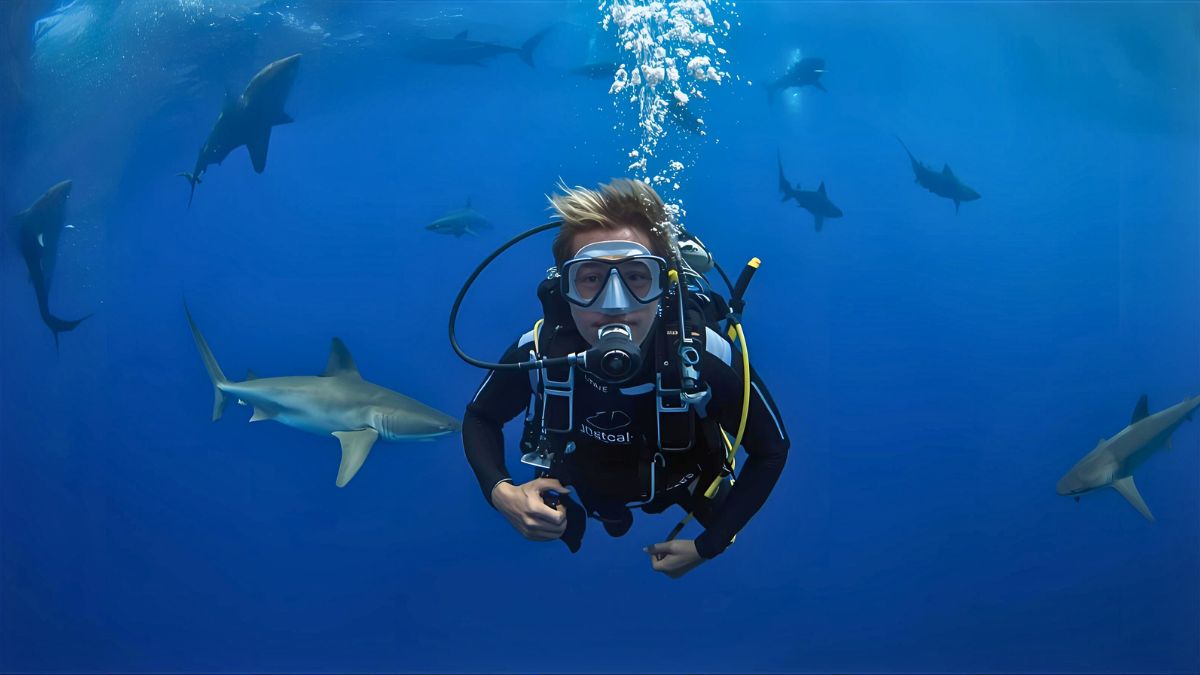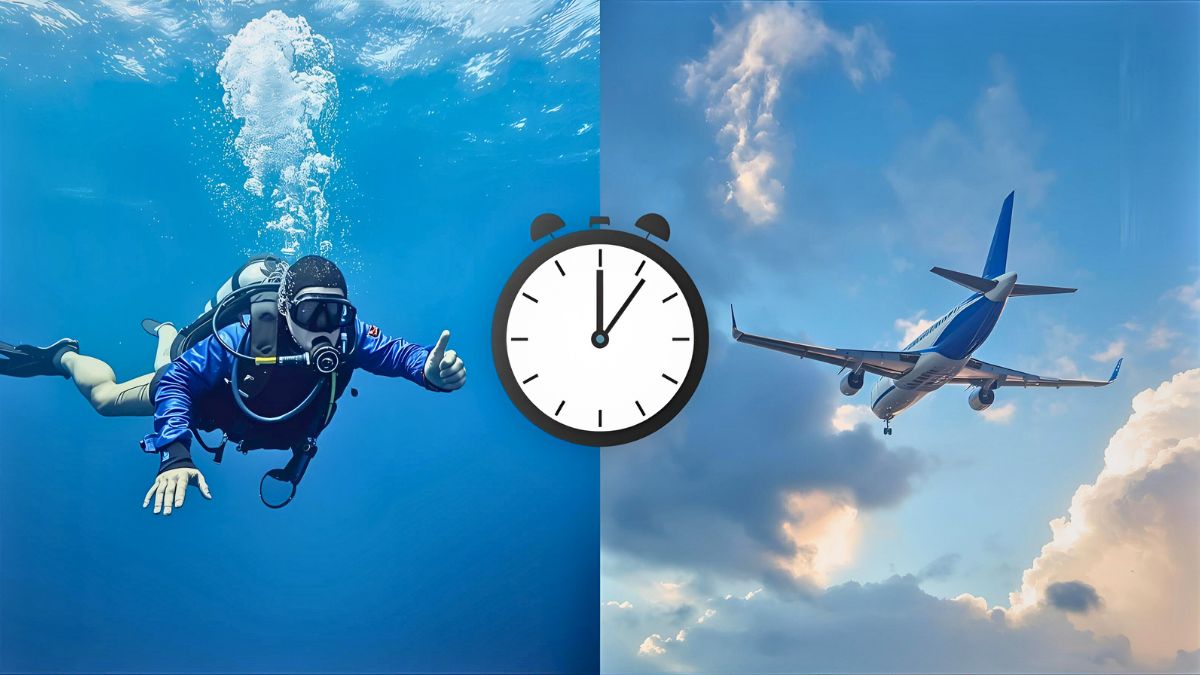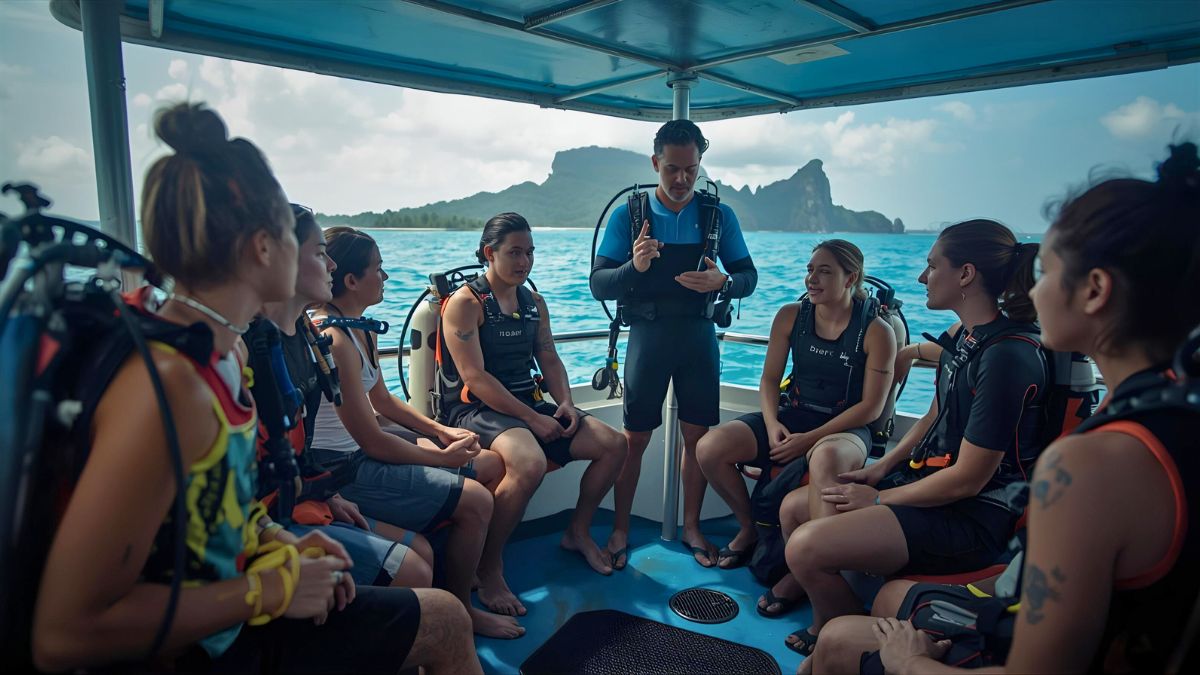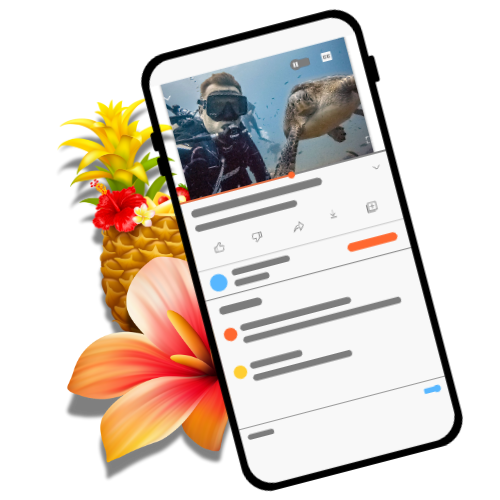When you think of Manuel Antonio in Costa Rica, pristine beaches, lush rainforests, and diverse wildlife probably come to mind. Just below the surface of the warm Pacific waters lies another world teeming with marine life and vibrant coral reefs.
Scuba diving in Manuel Antonio offers an unparalleled opportunity to experience Costa Rica’s underwater beauty. Whether you’re an experienced diver or a complete beginner, Manuel Antonio’s clear waters, abundant marine life, and proximity to incredible dive sites like Isla del Caño make it ideal for your next underwater adventure.
In this guide, I’ll share everything you need to know about scuba diving in Manuel Antonio, from the best dive sites to practical tips for planning your trip.
Why Choose Manuel Antonio for Scuba Diving?
Manuel Antonio isn’t just about stunning beaches and rainforests. The underwater world here is equally remarkable. Located on Costa Rica’s central Pacific coast, Manuel Antonio provides easy access to world-class dive sites within its national park and nearby marine reserves.
The rich biodiversity, calm waters, and professional dive centers make it an increasingly popular spot for divers.
What Makes Manuel Antonio Special for Divers?
Diverse Marine Ecosystems
The marine biodiversity in Manuel Antonio is astounding. These waters are part of a protected marine reserve, which means the ecosystems are thriving. You can encounter a variety of species including tropical fish, sea turtles, rays, and even the occasional whale or dolphin during the right season.
Calm, Warm Waters Year-Round
Water temperatures typically range from 27°C (80°F) in the cooler months to 28°C (82°F) during the warmer season. The generally calm seas make diving comfortable for beginners and experienced divers alike.
Professional Dive Centers with Conservation Focus
Several reputable diving centers in Manuel Antonio offer everything from beginner certification courses to advanced dive trips. Many operators are PADI-certified and actively participate in marine conservation programs, including coral restoration projects.
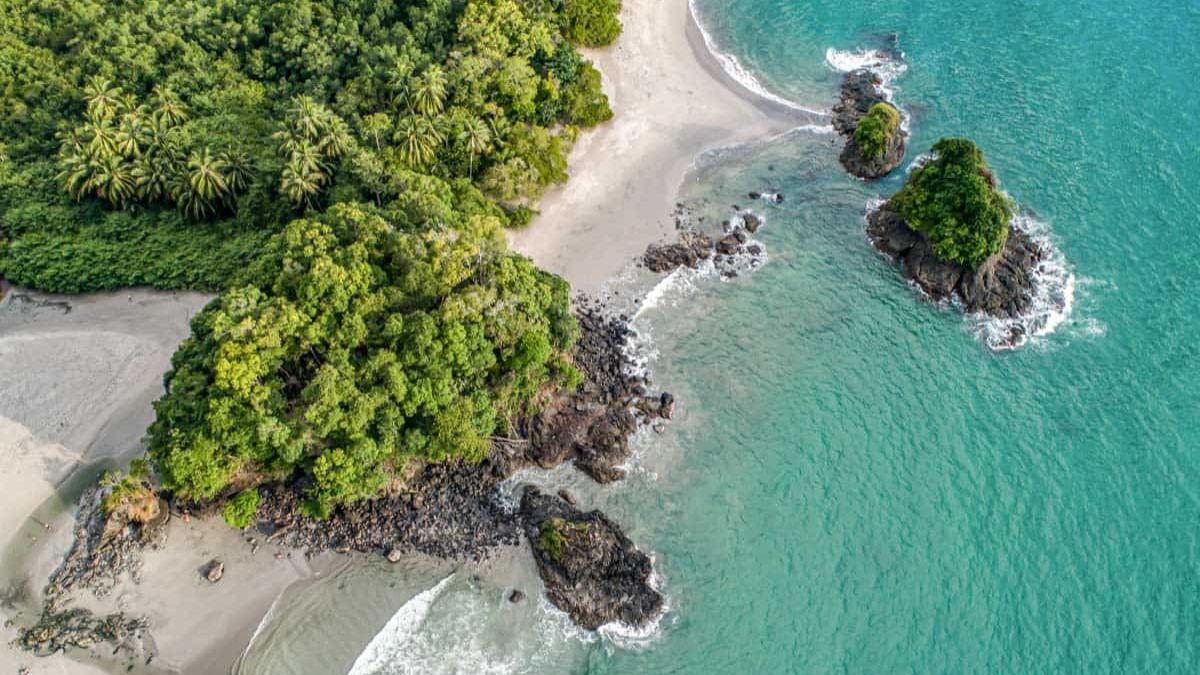
What Marine Life Can You See While Scuba Diving in Manuel Antonio?
The incredible variety of marine life is one of the biggest draws of scuba diving in Manuel Antonio. From colorful reef fish to larger pelagic species, every dive offers something special.
Common Marine Species
During a typical dive, you’ll likely see schools of snapper and jacks, white-tip reef sharks resting on sandy bottoms, and a dazzling array of tropical fish. Parrotfish, angelfish, moorish idols, puffer fish, and trumpetfish are regular residents.
Octopuses hide in crevices, moray eels peer out from rocky holes, and various crustaceans scuttle across the volcanic formations.
Did you know? Manuel Antonio National Park protects over 12 small islands along its coastline. Most dive sites can be reached within 20 minutes from Quepos port, making this one of the most accessible diving destinations in Costa Rica.
Larger Marine Life Encounters
Keep your eyes open for the larger residents of these waters. Sea turtles glide gracefully through the water columns, often curious about divers. Spotted eagle rays and stingrays cruise over sandy patches between reefs.
From December through May, you might spot massive manta rays filtering plankton near the surface. Watching a manta ray’s wingspan undulate through the water is genuinely unforgettable.
Seasonal Wildlife
The green season (May through November) brings humpback whales to Costa Rica’s Pacific coast. While you’re more likely to see them during surface intervals, occasionally their songs echo through the water during dives.
Dolphins are frequent visitors year-round. Their playful pods often accompany dive boats heading out to the sites.
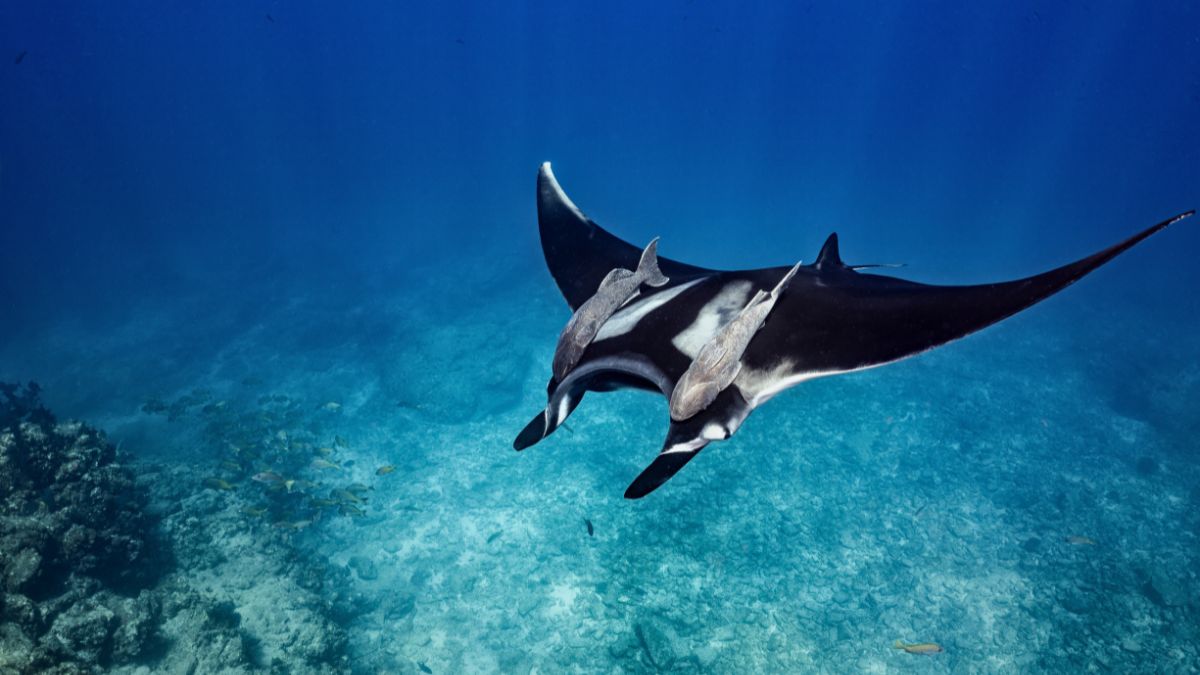
Exploring Manuel Antonio National Park Underwater
Manuel Antonio is perhaps best known for its national park. While the rainforest and wildlife on land are remarkable, the marine life just offshore deserves equal attention.
The waters surrounding Manuel Antonio National Park are part of a protected marine reserve, meaning the underwater ecosystems here are flourishing.
How Does Marine Protection Help Divers?
The protected status means fishing is restricted or prohibited in key areas, allowing fish populations to thrive. Coral reefs grow healthier, and an array of colorful fish, crustaceans, and mollusks call these reefs home.
When you dive in Manuel Antonio, you’re experiencing what healthy Pacific reefs should look like.
What You’ll See on the Reefs
The reefs around Manuel Antonio are teeming with life. Expect to see sponges in vibrant purples and yellows, anemones swaying with the current, and both hard and soft corals creating complex structures.
The volcanic origin of these islands creates dramatic underwater landscapes with caverns, pinnacles, and walls that serve as perfect habitat for marine life.
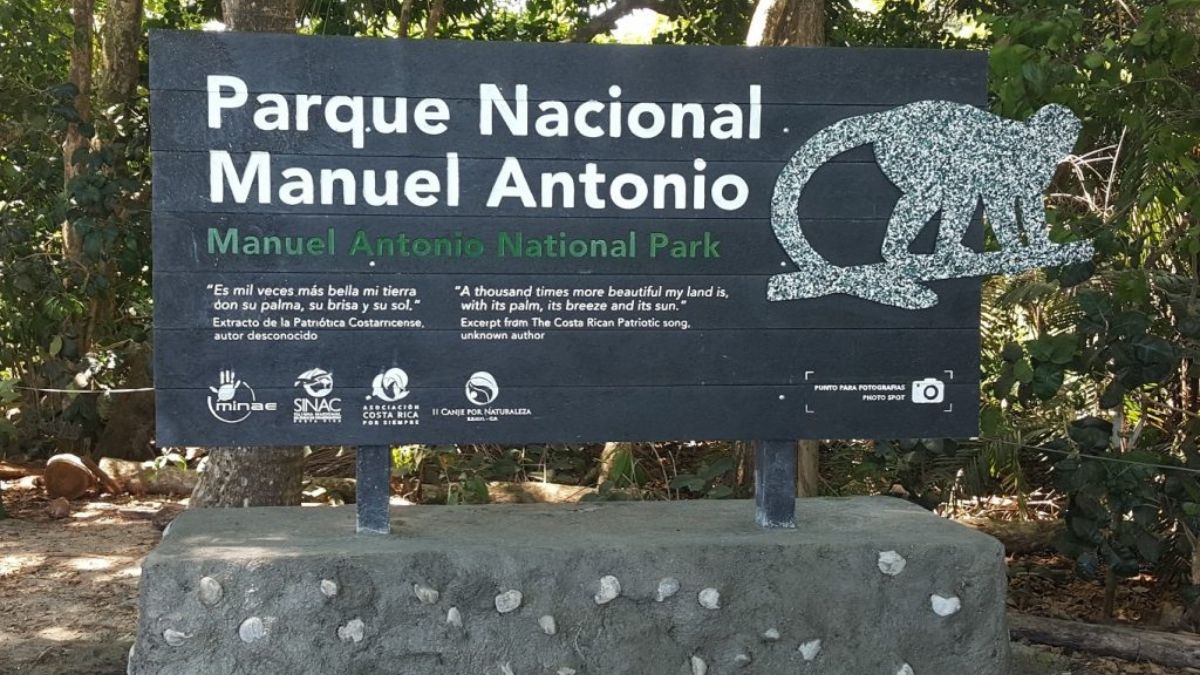
What Are the Top Dive Sites in Manuel Antonio?
Manuel Antonio offers more than 20 dive sites ranging from shallow, beginner-friendly locations to deeper sites for advanced divers. Here’s a breakdown of the most popular sites.
What Are the Best Beginner-Friendly Dive Sites?
Las Gemelas
Las Gemelas is perfect for your first discovery dive or if you’re newly certified. With calm conditions, minimal current, and depths ranging from 7 to 12 meters (20 to 40 feet), it’s an ideal introduction to diving here.
You’ll find pufferfish, eels, octopuses, and plenty of colorful reef fish in a relaxed environment.
El Aquario
El Aquario is another excellent beginner site. This shallow underwater pinnacle rises from the sandy bottom and attracts massive schools of fish. The calm conditions and abundant marine life make it perfect for photographers and divers still building their confidence.
Fun fact: The volcanic rock formations you’ll see while diving in Manuel Antonio are millions of years old. These ancient structures create the perfect environment for coral growth and provide countless hiding spots for shy marine creatures.
Pixie Rock
Pixie Rock offers depths of 20 to 40 feet with almost no currents, making it comfortable for less experienced divers. You’ll encounter angelfish, trumpetfish, jacks, and plenty of marine vegetation. The site provides great reef structure without the complexity that can overwhelm newer divers.
What Advanced Dive Sites Should Experienced Divers Explore?
Isla Larga (Long Island)
Isla Larga features some fantastic cavern diving opportunities. The site includes dramatic rock formations, deeper areas reaching 25 meters (80 feet), and the potential for stronger currents.
Advanced divers love exploring the swim-throughs and caverns where lobsters, eagle rays, and larger fish species congregate.
Canyon Reef
Canyon Reef lives up to its name with underwater canyons and dramatic topography. You can dive a little deeper here, exploring the rocky formations that create channels and overhangs.
Look for lobsters hiding in crevices, octopuses hunting along the bottom, and eels in the rocky sections.
Punta Quepos
Punta Quepos offers deeper diving with more exposure to current and surge. The site features excellent hard coral formations and attracts larger pelagic species. Red snapper, schools of jacks, and the occasional shark make this site exciting for divers looking for more adventure.
Isla del Caño: The Ultimate Diving Paradise Near Manuel Antonio
No discussion about scuba diving in Manuel Antonio would be complete without mentioning Isla del Caño. This biological reserve, located about 50 kilometers off the coast, is known for its pristine coral reefs and diverse marine species.
Many consider it one of the best places to dive in Costa Rica.

Why Is Isla del Caño So Special for Divers?
Exceptional Visibility
The crystal-clear waters surrounding Isla del Caño offer incredible visibility, often exceeding 30 meters (100 feet). This makes it easier to take in the full beauty of the underwater landscapes and spot marine life from a distance.
Marine Megafauna Encounters
Isla del Caño is home to large marine creatures including white-tip reef sharks, the occasional hammerhead, manta rays, and sea turtles. During certain times of the year, you may encounter dolphins and humpback whales near the island.
Unspoiled Coral Reefs
As a protected biological reserve, Isla del Caño’s coral reefs are among the most untouched in Costa Rica. The vibrant corals support a diverse ecosystem of fish, eels, rays, and more. It feels worlds away from human impact.
Should You Dive Isla del Caño or Stay in Manuel Antonio?
I get asked this question regularly. The answer depends on your priorities, time, and experience level.
Choose local Manuel Antonio diving if
- You have limited time or budget
- You’re a beginner or completing certification dives
- You prefer shorter boat rides (under 20 minutes)
- You want flexibility to dive multiple days
Choose Isla del Caño diving if
- You want the absolute best visibility and coral health
- You’re hoping to see larger marine animals like manta rays or sharks
- You’re comfortable with longer boat rides (45 minutes each way)
- You’re willing to invest more for a premium experience
Many dive centers in Manuel Antonio offer day trips to Isla del Caño. The trips typically include two dives, lunch, and boat transportation, making it a full-day adventure.

How to Choose the Right Diving Center in Manuel Antonio
Your experience will largely depend on the diving center you choose. Fortunately, the area is home to several highly reputable dive operators who offer services tailored to both beginners and advanced divers.
What Should You Look For in a Dive Center?
PADI or SSI Certification
Make sure the dive center is certified by a recognized international organization like PADI or SSI. This ensures they follow standardized safety protocols and training methods.
Many centers in Manuel Antonio are PADI 5-star facilities or career development centers, indicating the highest level of professional operation.
Equipment Quality and Maintenance
Ask about their equipment. Quality dive centers maintain their gear meticulously and replace equipment regularly. You should never feel pressured to use poorly maintained regulators, BCDs, or tanks.
Most reputable operators here use name-brand equipment and are transparent about their maintenance schedules.
Group Sizes and Guide Ratios
Smaller groups mean more personalized attention and better diving experiences. Look for centers that maintain low diver-to-instructor ratios.
Professional operations typically keep groups to 4-6 divers per guide, ensuring everyone gets attention and the underwater environment isn’t overwhelmed.
Conservation Commitment
Costa Rica leads the world in environmental conservation, and diving operators here take that responsibility seriously. Look for dive centers that participate in coral restoration programs, marine debris cleanup, or are certified as PADI ECO centers or Green Fins members.
Your diving should contribute to protecting these ecosystems, not degrading them.
When Is the Best Time for Scuba Diving in Manuel Antonio?
One of the great advantages of scuba diving in Manuel Antonio is that it’s a year-round destination. However, there are some seasonal differences that can influence your experience.
How Is Diving During Dry Season?
December to April: Peak Conditions
The dry season offers the best conditions for underwater visibility. The waters are calm, the weather is sunny and warm, and visibility typically ranges from 12 to 20 meters (40 to 65 feet), sometimes even better on exceptional days.
This is an excellent time for coral reef exploration and underwater photography. The predictable weather means fewer trip cancellations, making it ideal if you’re on a tight vacation schedule.
You’ll also have the best chance of seeing manta rays during these months, particularly from December through May.
The tradeoff? This is peak tourist season, so dive sites can be busier and prices may be slightly higher. Book in advance to secure your spots.
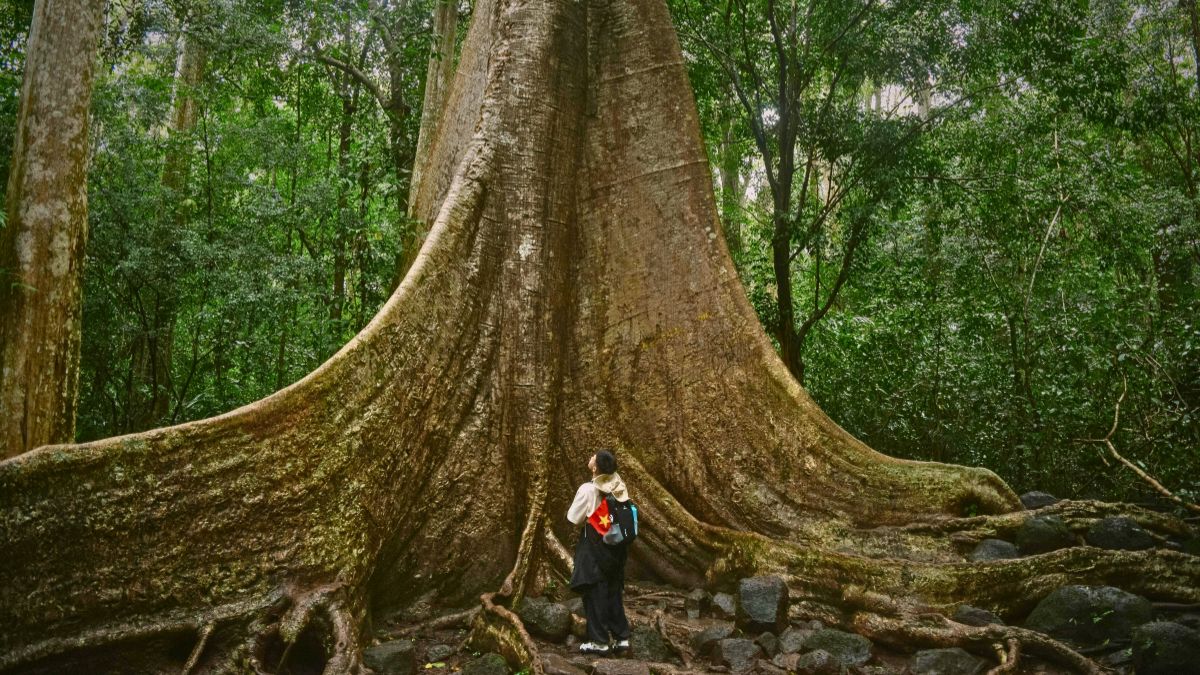
What About Diving in Green Season?
May to November: When Nature Thrives
Don’t let the increased rain during this period scare you away. The marine life actually flourishes during these months. Nutrient-rich waters attract more fish, and the increased plankton supports the entire food chain.
The green season is particularly good for spotting humpback whales (July to November) and dolphins. Two separate whale populations visit Costa Rica during different months, giving you extended opportunities for surface encounters.
Rain typically comes in afternoon bursts rather than all-day downpours, meaning morning dives are often unaffected. You’ll also enjoy fewer crowds, better prices, and dive operators who can offer more flexible, personalized service.
What’s My Personal Recommendation on Timing?
As an scuba instructor who dives these waters year-round, I appreciate different aspects of each season. If visibility is your top priority and you want guaranteed calm conditions, come during dry season.
If you’re more interested in vibrant marine life, potential whale encounters, and a more intimate diving experience, the green season offers incredible value.
Honestly, there’s never a bad time to dive in Manuel Antonio. The water stays warm, the marine life is always abundant, and the underwater experience remains world-class throughout the year.
Diving with Purpose: Marine Conservation in Manuel Antonio
Costa Rica is a global leader in environmental conservation, and its marine areas are no exception. Dive centers in Manuel Antonio are committed to protecting the delicate ecosystems they explore.
Many participate in reef monitoring, marine biodiversity studies, and clean-up efforts to ensure the waters remain pristine for generations to come.
How Can You Dive Responsibly?
As a diver here, you can be part of conservation efforts. The most important thing is practicing proper buoyancy control. Even accidental contact with coral can damage formations that took decades to grow.
Your fins are your biggest potential impact. Keep them controlled and avoid kicking near the reef.
Use reef-safe sunscreen. Many conventional sunscreens contain chemicals that damage coral reefs and disrupt marine ecosystems. Switch to mineral-based, reef-safe alternatives before your dive trips.
Never touch, chase, or harass marine life. That sea turtle might look like it wants to interact, but following too closely or attempting to touch it causes stress. Maintain respectful distances and let animals approach you if they’re curious.
What Conservation Programs Can You Join?
Many dive centers offer opportunities to get involved in conservation activities beyond just diving responsibly. Oceans Unlimited, for example, runs a Coral Discovery Day program where divers participate in coral restoration workshops and help maintain coral nurseries.
Some centers collaborate with organizations like Marine Conservation Costa Rica on ongoing research projects, reef surveys, and data collection. Even if you’re just visiting for a few days, participating in these programs creates a deeper connection to the underwater world.
Did you know? Over 300 new coral colonies have been successfully transplanted onto target reefs in Manuel Antonio through local conservation efforts. These coral restoration projects are rebuilding reef ecosystems damaged by previous impacts, and divers can directly participate in this work.
My Personal Experience: Unforgettable Moments Diving in Manuel Antonio
One of my most memorable experiences scuba diving in Manuel Antonio was swimming alongside a group of sea turtles. We were diving just off the coast of the national park, and the visibility was perfect, easily 15 meters.
As we descended along the reef, I spotted three green sea turtles gliding effortlessly through the water, completely unbothered by our presence.
For a few magical moments, we swam together. Their graceful movements were mesmerizing. They seemed to fly through the water with just slight adjustments of their flippers.
One turtle came close enough that I could see the intricate patterns on its shell and the ancient, wise look in its eyes. It was a humbling reminder of the incredible biodiversity Costa Rica offers, both above and below the waterline.
Scuba Diving in Manuel Antonio
But it’s not just turtles that make diving here special. I remember another dive at Isla Larga where we encountered a massive school of jacks, hundreds of them moving as one organism, creating a living wall of silver fish.
We hovered at depth, trying not to disrupt them, as they swirled around us in perfect formation. When they finally moved on, an eagle ray emerged from behind a rock formation and glided past, its spotted wings rippling gracefully.
These moments are why I keep coming back to Manuel Antonio’s waters. Every dive offers the potential for special encounters, whether it’s witnessing a pod of dolphins playfully darting around your boat during the surface interval or spotting a massive manta ray sweeping over the coral during the dry season.
What Certification Do You Need for Scuba Diving in Manuel Antonio?
For standard two-tank dive trips, you need to be a certified diver. PADI, SSI, NAUI, or any other recognized certification organization will be accepted. Remember to bring your certification card, dive operators are required to verify your credentials.
If you’re not certified yet, don’t worry. Most dive centers offer Discover Scuba Diving programs. These introductory experiences include basic dive theory and pool sessions, followed by a shallow guided dive (typically to 12 meters or 40 feet) under direct instructor supervision.
It’s a perfect way to try diving before committing to full certification.
For those interested in advancing their skills, many centers offer Open Water certification courses, Advanced Open Water training, and specialty certifications like coral restoration, underwater photography, or deep diving.
What Should You Bring on Your Dive Trip?
Essential Items
- Your certification card (absolutely required)
- Swimsuit and towel
- Reef-safe sunscreen
- Light, comfortable clothing for the boat
- Camera or GoPro if you want to capture the experience
- Seasickness medication if you’re prone to motion sickness
Optional Equipment
- Your own mask, snorkel, and fins if you prefer using familiar equipment
- Dive computer if you have one
- Underwater flashlight for exploring caverns or darker areas
Most dive centers provide full equipment rental (BCD, regulator, wetsuit, weights, tank) as part of the tour price, so you don’t need to travel with your own gear unless you prefer it.
How Much Does Scuba Diving in Manuel Antonio Cost?
Typical pricing for local two-tank dive trips ranges from $115 to $146 per person, including all equipment, guides, snacks, and park fees. Prices vary depending on the operator and what’s included.
Isla del Caño day trips cost more, typically $180 to $220 per person – due to the longer boat ride, premium dive sites, and usually including lunch. The extra investment is worth it for the exceptional visibility and pristine reefs.
Discover Scuba experiences for non-certified divers typically cost $100 to $135, including all instruction, equipment, and your first guided dive.
Compared to other world-class diving destinations, Manuel Antonio offers excellent value. You’re getting professional PADI instruction, quality equipment, small group sizes, and access to protected marine reserves at prices significantly lower than comparable locations in the Caribbean or Southeast Asia.
Ready to Explore Scuba Diving in Manuel Antonio?
If you’re looking for a diving destination that offers more than just beautiful beaches, Manuel Antonio should be at the top of your list. The combination of vibrant marine life, crystal-clear waters, year-round diving conditions, and access to Isla del Caño makes this region a diver’s dream.
Whether you’re a seasoned diver or trying scuba for the first time, Manuel Antonio delivers unforgettable underwater experiences. The professional dive centers, commitment to marine conservation, and incredible biodiversity create the perfect environment for exploring the Pacific’s underwater treasures.
So pack your gear, choose a reputable diving center, and get ready to explore one of the world’s most stunning underwater ecosystems. Your adventure awaits beneath the waves, and I promise you, the memories you create diving in Manuel Antonio will stay with you long after you surface.
Explore More Manuel Antonio Resources
- How to Get to Manuel Antonio
- Where to Buy Manuel Antonio Tickets
- Best Beaches in Manuel Antonio
- Wildlife in Manuel Antonio
- Manuel Antonio Hiking Trails
- Best Time to Visit Manuel Antonio
- Manuel Antonio with Kids
- Manuel Antonio vs Corcovado
- Where to Stay in Manuel Antonio
- Costa Rica Diving Seasons
- Get PADI Certified in Costa Rica
- Budget Diving in Costa Rica
- Best Snorkeling Spots in Costa Rica
- 6 Things You Should Never Do Right After Diving

